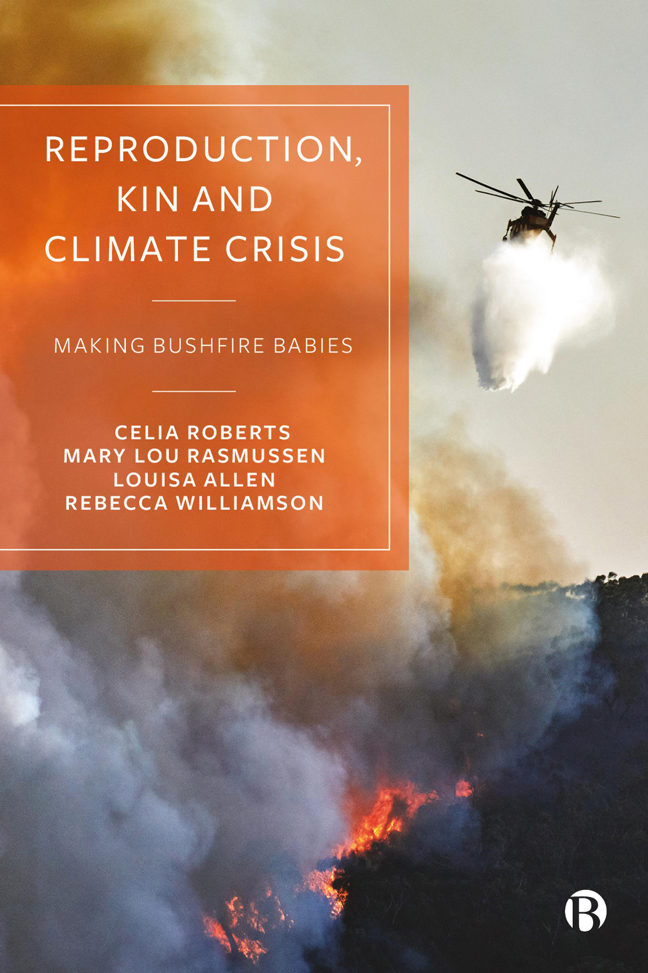Book contents
- Frontmatter
- Contents
- List of Figures and Table
- Notes on the Figures
- Notes on the Authors
- Acknowledgements
- Interleave 1
- 1 Reproducing in Climate Crisis
- Interleave 2
- 2 Methods in Crisis
- Interleave 3
- 3 Breath, Breathing and ‘Mum-Guilt’
- Interleave 4
- 4 Smoke, Machines and Public Health
- Interleave 5
- 5 Kin, Care and Crises
- Interleave 6
- 6 Pyro-reproductive Futures
- Interleave 7
- 7 Making Bushfire Babies
- Notes
- References
- Index
4 - Smoke, Machines and Public Health
Published online by Cambridge University Press: 24 January 2024
- Frontmatter
- Contents
- List of Figures and Table
- Notes on the Figures
- Notes on the Authors
- Acknowledgements
- Interleave 1
- 1 Reproducing in Climate Crisis
- Interleave 2
- 2 Methods in Crisis
- Interleave 3
- 3 Breath, Breathing and ‘Mum-Guilt’
- Interleave 4
- 4 Smoke, Machines and Public Health
- Interleave 5
- 5 Kin, Care and Crises
- Interleave 6
- 6 Pyro-reproductive Futures
- Interleave 7
- 7 Making Bushfire Babies
- Notes
- References
- Index
Summary
Although bushfires are a standard part of the Australian summer, and despite the fact that there have been catastrophic fires in the recent and more distant past, including in Canberra, until 2020 there were no public health campaigns about the dangers of smoke inhalation that occurs over days or weeks, and no information for specific groups of people (Vardoulakis et al, 2020). Information about what to do in fire seasons has focused on emergency escape plans (which every citizen is exhorted to make) and house and garden preparations to suppress fires near dwellings. Those of us living in Canberra were ‘fire ready’ that summer – bags packed with key essentials and plans made as to where we would retreat if necessary (the showground, the local oval), but none of us had plans for how to live with smoke.
This infographic (Figure 4.1) was co-designed in January 2020 by ANU colleagues to try to fill this void, and was translated into 11 languages. It was created as a visual summary of a dedicated website where more extensive information was made available along with links to relevant resources. Against a silhouette of Australian bush and a huge smoke plume, the infographic gives advice to citizens about how to take care of each other during bushfire smoke events. Near the end of instructions, at the bottom right of the page, a simple graphic depicts an older woman with a walking stick, a pregnant woman, a crawling baby and a small cat. ‘Help others’, readers are told, implying that these are the figures of vulnerability who may require care.
As discussed in Chapter 3, the pregnant women in our study recognized themselves in these images and were willing to think about themselves as in some ways more vulnerable than nonpregnant others. We could argue that they were model citizens in this regard: obliging, responsive, concerned and caring. Most of them followed all the other instructions on the infographic – they stayed indoors, reduced their physical activities, and tried to protect their mental and physical health. Some of them wore masks and many made plans to evacuate in the case of fire. To greater and lesser extents, they all obeyed the exhortation to follow governmental advice on bushfires. What was less clear, however (unless they went to the more detailed website), was how they should ‘follow air quality information’, another instruction on the infographic.
- Type
- Chapter
- Information
- Reproduction, Kin and Climate CrisisMaking Bushfire Babies, pp. 79 - 110Publisher: Bristol University PressPrint publication year: 2023



